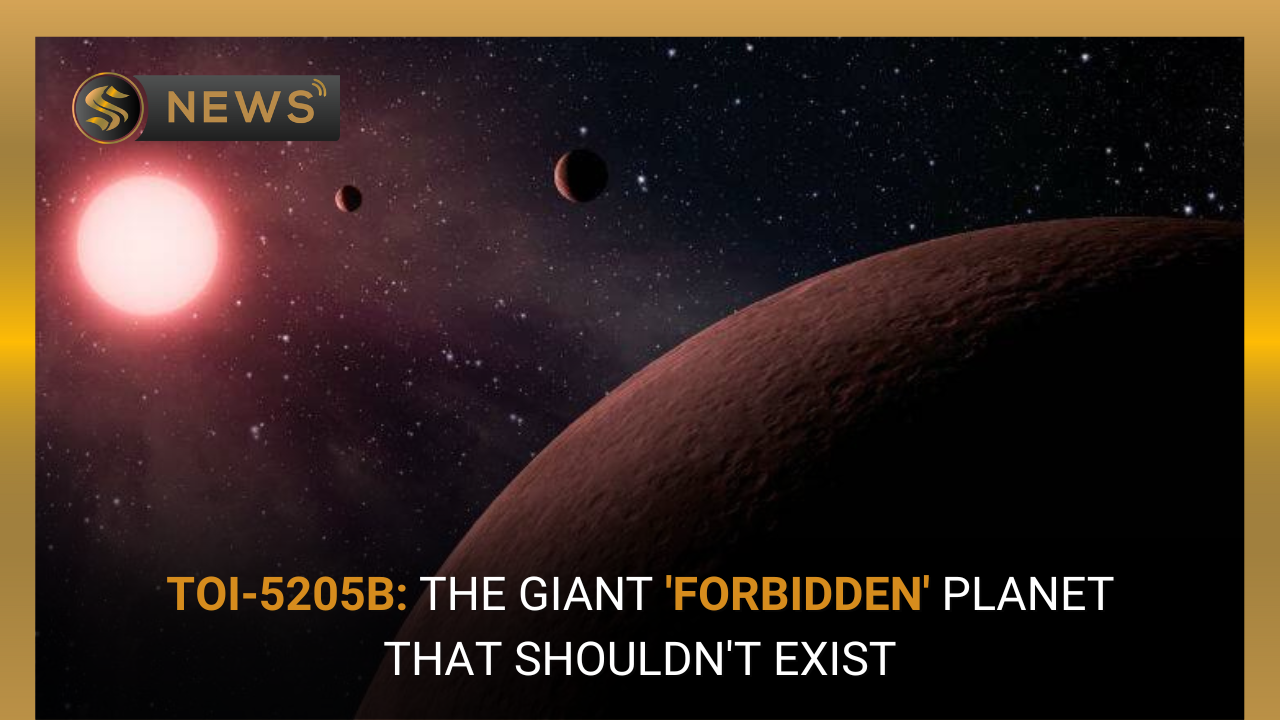
Share This Story, Choose Your Platform!
Small Star, Big Surprise: Unusually Large Planet Found 280 Light-Years from Earth
Astronomers have made an exciting discovery of an unusually large planet, known as TOI 5205b, orbiting a small star located approximately 280 light-years away from Earth. The new exoplanet, which is about the size of Jupiter, was spotted by researchers using NASA’s Transiting Exoplanet Survey Satellite (TESS). The planet-hunting mission launched in 2018 and is designed to survey the light of the nearest and brightest stars to identify dips in starlight, indicating the presence of orbiting planets. Since its launch, TESS has found thousands of potential planets.
The newly discovered exoplanet orbits a red dwarf star called TOI-5205, which is about 40% the size and mass of our sun and has a temperature of approximately 5,660 degrees Fahrenheit (3,127 degrees Celsius). This type of star is known as an M dwarf, which is smaller, cooler, and redder than our sun. Over the years, astronomers have discovered that M dwarf stars are some of the most common stars in the universe, and they are more likely to have planets orbiting around them.
You May Also Read
Rotation of the Earth’s Core has Reversed Its Spin
The researchers were not expecting such small stars to host giant planets, but that is precisely what they found when they took a closer look at the TOI-5205 planetary system. The unexpected size of the newly discovered world has led researchers to call it the “forbidden planet.”
According to a study detailing the findings published in The Astronomical Journal, the planet formation theories are being challenged by the discovery of this new planetary system. The researchers compared the planet to a pea orbiting around a lemon, with Jupiter in our solar system being like a pea orbiting a grapefruit (standing in for our sun).
What’s intriguing about this discovery is that TOI-5205b is the first gas giant planet to be found around a low-mass M dwarf star. In the past, astronomers have found a few gas giant planets orbiting older M dwarf stars. This new discovery has challenged scientists’ understanding of how planets form.
The study’s author, Shubham Kanodia, a postdoctoral fellow at the Carnegie Institution for Science in Washington, DC, said, “The host star, TOI-5205, is just about four times the size of Jupiter, yet it has somehow managed to form a Jupiter-sized planet, which is quite surprising.” According to current understanding of planet formation, TOI-5205b should not exist; it is a “forbidden” planet.

The discovery of the planetary system raises questions about how planets form from the leftover material from star formation swirling around the star and creating a rotating disk where planets are born. Kanodia explained that the existence of TOI-5205b stretches what we know about the disks in which these planets are born.
Scientists are eager to observe the planet in the future using the James Webb Space Telescope. With its advanced technology, the telescope could detect if TOI-5205b has an atmosphere and unlock more of the secrets about how it formed. The researchers also expect to make more discoveries in the future using data collected from the Habitable Zone Planet Finder on the 10-meter Hobby-Eberly Telescope at the University of Texas at Austin’s McDonald Observatory.




